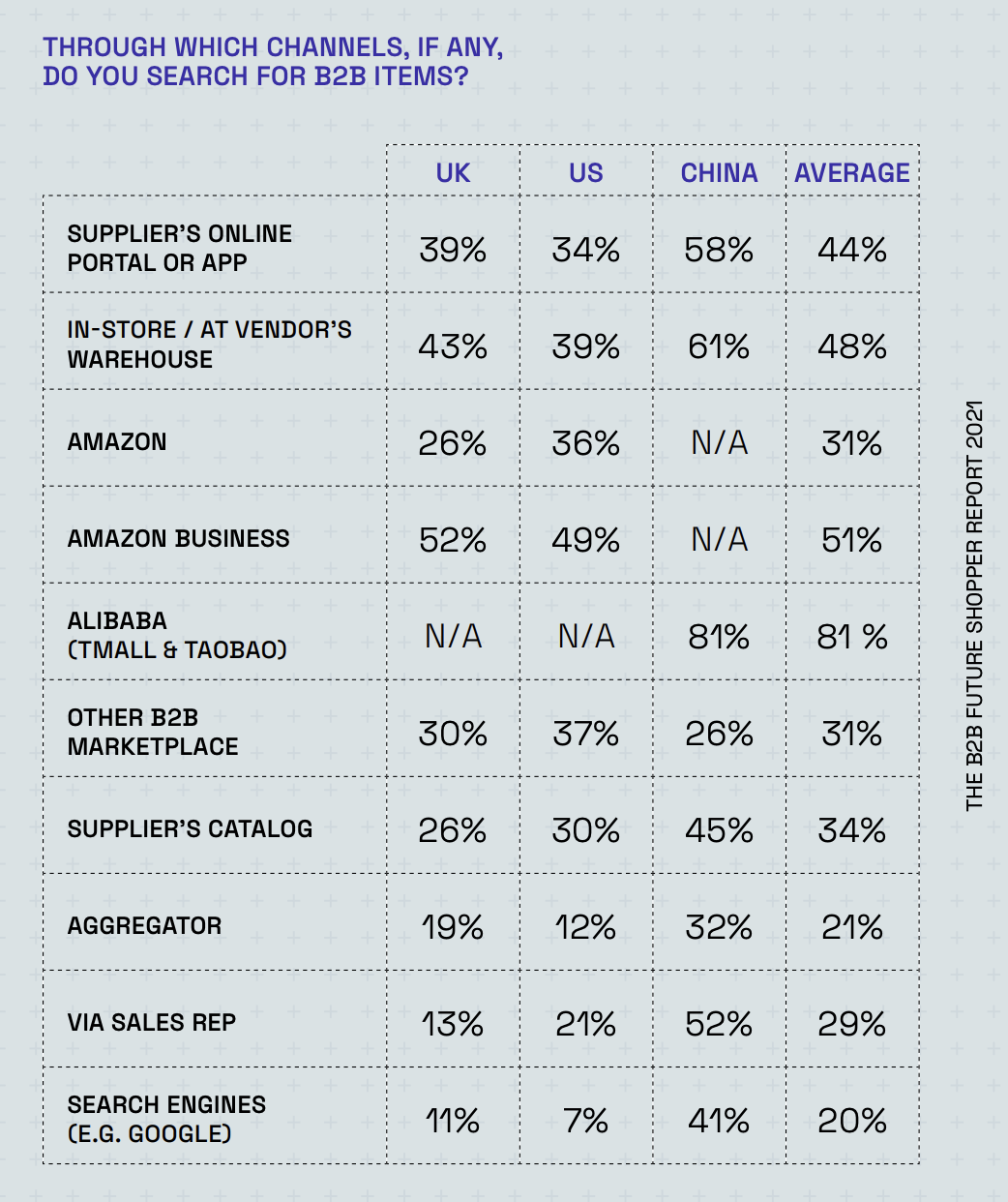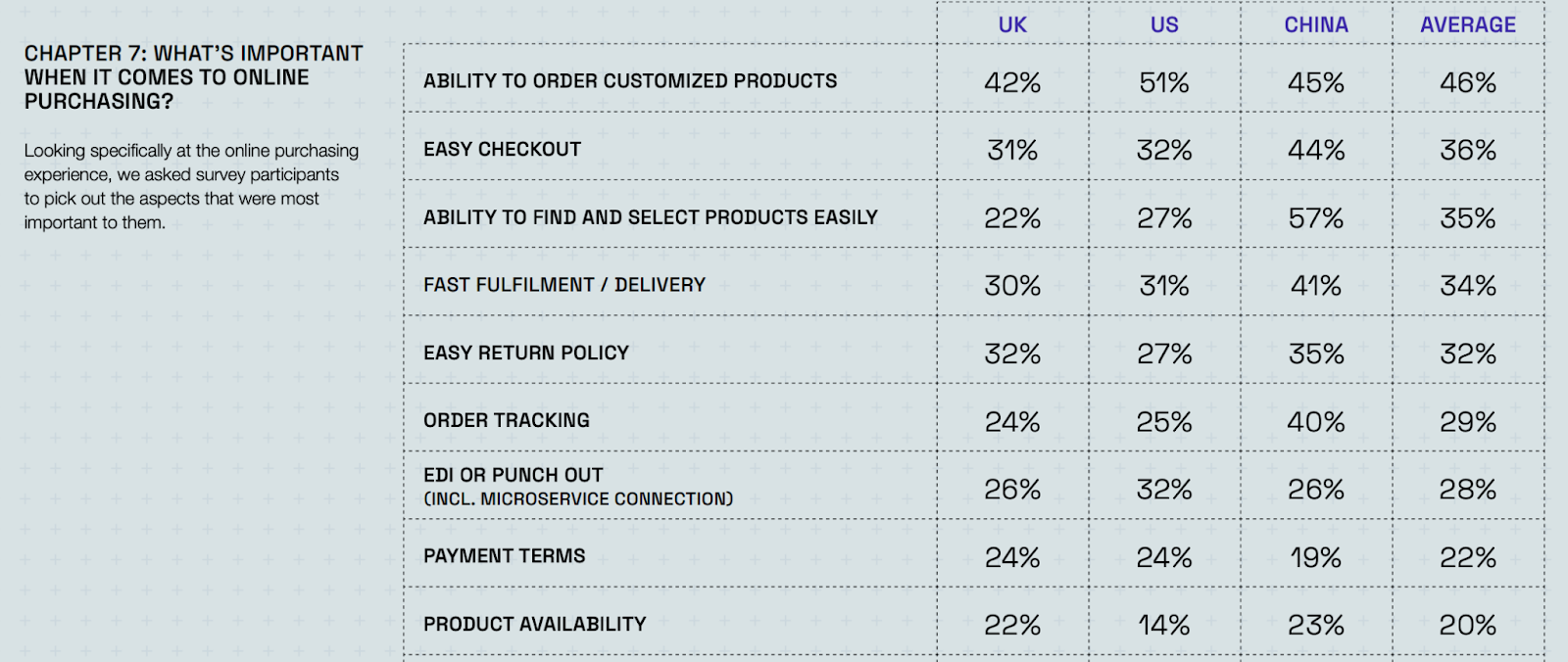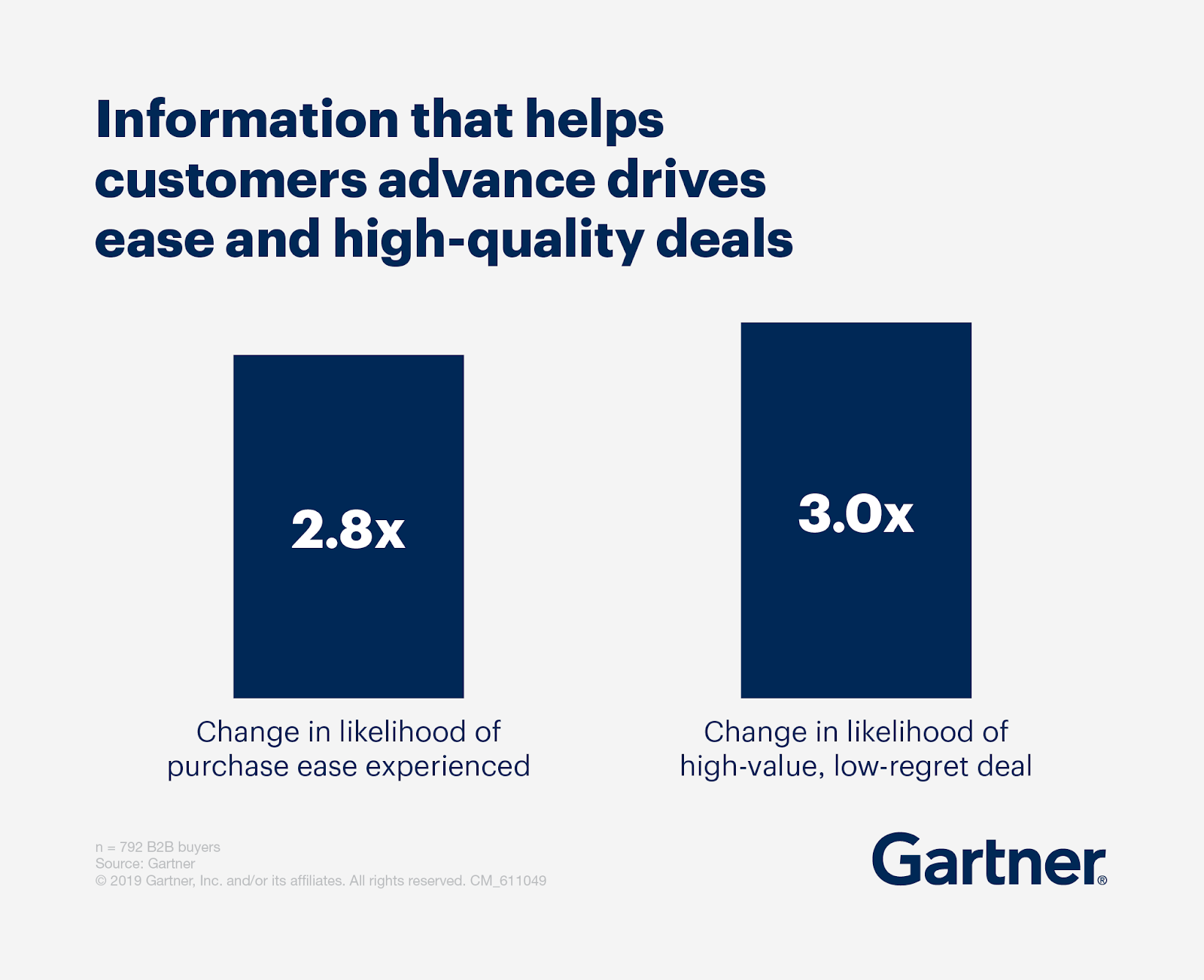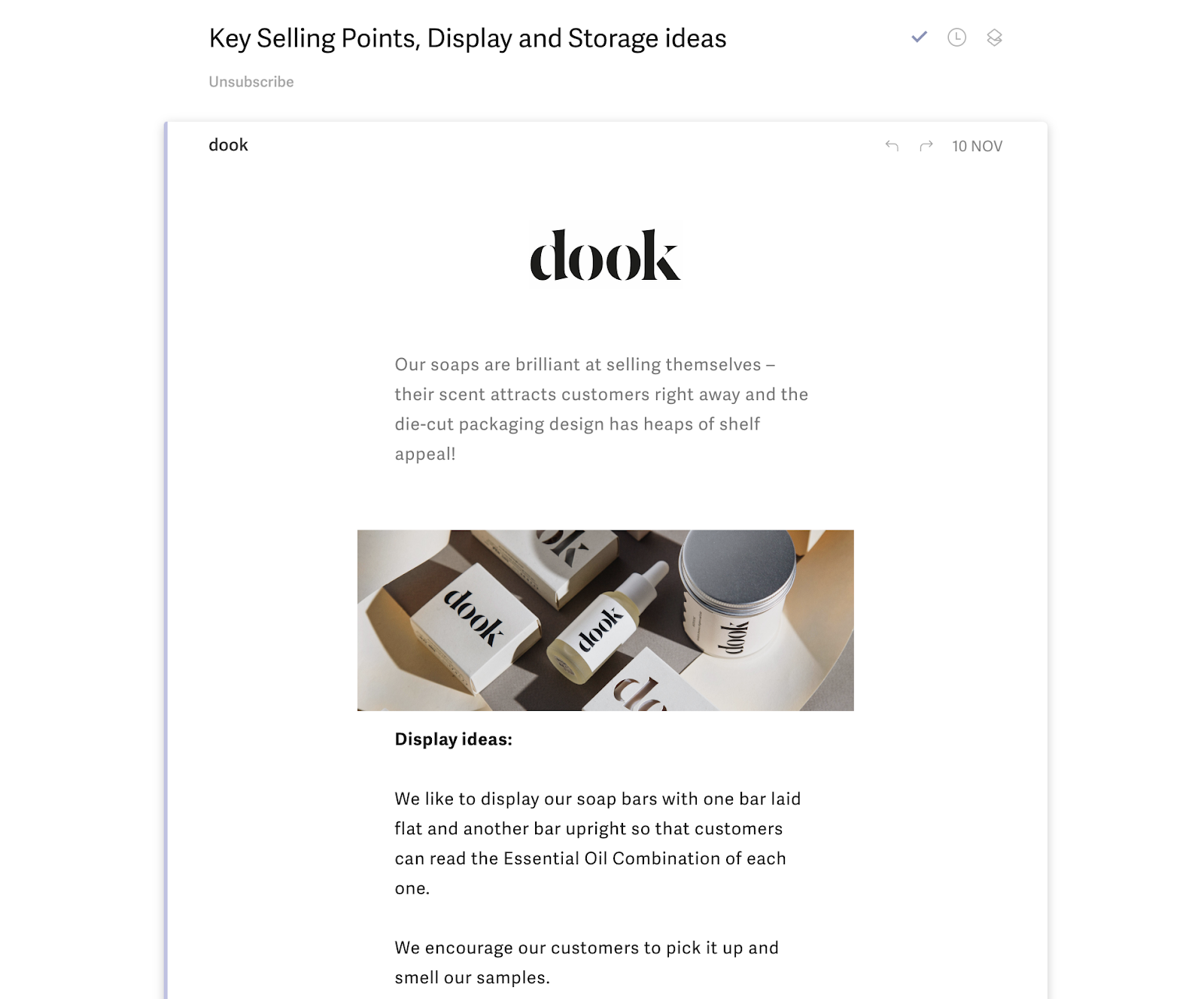The business-to- business (B2B) industry has moved online. As the typical decision-making process for business customers has shifted from trade show attendance to independent online research.
Successful B2B companies are those that handle both simultaneously, easing pain points throughout the buying process and reaffirming to customers that they’re making the right decision.
The problem? Business buying decisions aren’t taken lightly. Several stakeholders form the B2B buying group; purchases need to provide a clear return on investment before giving the seal of approval.
This guide shares how to handle those complexities as potential customers progress through the B2B buying process.
What is a B2B buying process?
The B2B buying process involves multiple stages including need identification, research, evaluation of options, procurement, and post-purchase evaluation. Businesses engage in this methodical approach to ensure informed decision-making and to procure products or services from other businesses that meet their operational requirements.
Who is involved in a typical B2B purchase process?
According to Gartner, the average B2B buying decision involves six to 10 people, each of whom is armed with more than four pieces of information they’ve independently gathered as part of their own decision-making process.
The average B2B sales process involves these five roles:
-
Initiator. An initiator kicks off the buying process. They’re the person who recognizes a problem and begins to explore a solution.
-
Influencers. Initiators can enlist the help of influencers to sway buyers and decision-makers to make the purchase. Influencers can be internal, such as heads of a department, or external, such as LinkedIn influencers.
-
B2B decision maker. The decision maker gives the go-ahead for an organization to make a purchase. This is typically a store’s owner/CEO, head of accounting, or business development manager.
-
Buyer. The person responsible for meeting order minimums, negotiating wholesale price discounts, and making the purchase. If you’re selling to big-box retailers, for example, the store’s buying or merchandising manager would likely be the buyer.
-
End user. The end user is the person who will be using the new product on a regular basis. If a company is buying new office chairs, for example, office workers would be the end users. (Sometimes, the same individual acts as both the end user and the initiator—like if office workers complained of back problems to their manager.)
“I’ve found that a typical B2B buying process will involve at least three people: the CEO or owner of the business, their head of sales, and a VP of operations or other department head who has been tasked with making the final decision.”
—Kader Meroni, founder of Atlas Tea Club
What does the B2B buying process look like?
The vast majority of B2B buying decisions can be broken down into six stages—though buyers don’t necessarily follow the path in a linear fashion. They can hop between stages, reverse when they need extra time to make decisions, and skip over certain steps to revisit later.
As Kader Meroni, founder of Atlas Tea Club, says, “There’s no one-size-fits-all model for the buying process. It’s always going to be different, depending on the company and industry you’re in.”
1. Initiators recognize a problem
The first stage in the B2B buying process is when the initiator recognizes a problem. Also known as a pain point, it’s when something happens to trigger a buyer into thinking something could be done to alleviate the issue (or make their lives easier).
We can see this in action with a small boutique. The owner is struggling to drive foot traffic to the store because the inventory it stocks doesn’t excite local shoppers in the area. A lack of footfall would be the first step in replenishing inventory. The retailer has recognized the problem, and their buying journey begins.
2. Buyers begin to explore a solution
Once B2B buyers have identified a problem they need to solve, the next stage in the process is to explore a solution. At this point, initiators are unlikely to know the exact product(s) that will solve their problem. The main objective throughout this stage of the buying process is to confirm that a solution is possible.
Using the same boutique example: the retailer doesn’t know which products will improve footfall, but its owner starts to explore what might solve the issue. That could include:
-
Inventory reports to compare the sell-through rate of each SKU within the past six months
-
Competitive analysis on other stores in the area to uncover the products it stocks
-
Trending products on social media apps like Instagram, LinkedIn, or TikTok
3. A company builds its requirements
A buyer begins taking their buying decision more seriously once they start detailing the requirements of its next purchase. They move from “We know this is a problem and have a rough idea of how to solve it,” to “We need XYZ in whatever we buy to solve it.”
If we continue with the same boutique example, the retailer might detail the following requirements when searching for inventory that will increase in-store foot traffic:
-
It’s not a seasonal product; demand stays consistent throughout the year
-
The type of product must be on an upward trend, according to Google Trends data
-
The product hashtag must have a minimum of 50,000 views on TikTok
-
The product must be small, lightweight, and available for shoppers to take home instantly
-
The product must fit within the spare 30 square footage of unused storage space in the stockroom
4. Potential suppliers are evaluated
Buyers can begin to evaluate suppliers that offer products or services that meet their criteria.
According to Gorilla Group’s B2B Future Shopper Report, a supplier’s app or portal is the top digital channel B2B buyers use when searching for new items. That’s shortly followed by stores and warehouses, B2B marketplaces like Amazon, and search engines.

Product quality aside, B2B buyers shortlist potential suppliers and evaluate other aspects of selecting them. This includes the wholesale price of a product, reviews from other customers, any sales or marketing promotions, and shipping and fulfillment timescales. The ideal supplier beats its competition by catering to as many of these demands as possible.
“Our clients are interested in finding suppliers in the United States to avoid a lot of the supply chain issues that are occurring with importing products. Also, they want their products delivered fast! We aim to ship within 48 hours from our dedicated warehouse, but more often it’s within one day.”
—Kami Myers, online sales manager at Squishface
5. The purchase is validated and approved
Business buyers have one last hoop to jump through before completing a B2B purchase: securing buy-in from stakeholders, including decision-makers and buyers.
This is a relatively quick step for small businesses with fewer employees. However, as an organization expands, as does its ability to quickly approve new purchases. Instead of a single founder approving purchases, a larger boutique might need to involve the head of merchandising, store manager, and business development manager during the validation stage of any B2B purchase decision.
6. A product or service is purchased
Once stakeholders give their approval, the B2B buying process comes to a close. The organization has the green light to purchase goods or services from its chosen supplier.
Key factors that influence B2B buying decisions
Why does a buyer purchase products in the first place? Most B2B buying decisions happen as a result of one of three factors.
-
Organizational factors. Businesses set ambitious growth targets and purchase goods that help teams reach these goals quicker or more effectively. If there’s pressure to generate more revenue or open a new store location, for example, the drive to purchase new products could be higher.
-
Individual factors. Initiators in the buying process might start the purchasing process if they’ve realized a need for new products. For example, cashiers at a grocery store might start looking for ergonomic desk chairs if they get back pain midway through their shift.
-
Environmental factors. With more ecommerce companies cropping up each day, the landscape for many industries is competitive. Buyers might kick off their buying process as an attempt to stay ahead and remain competitive.
Loss aversion bias often plays a role in B2B buying decisions, too. Psychology makes it more difficult to lose something than to gain the same thing. Play on this in your B2B marketing strategies—the idea that someone can avoid losing something by purchasing your products—to sway their decision.
How to speed up the B2B purchase process
The B2B buying process is lengthy. Unlike business-to-consumer (B2C) transactions, where there’s only one person involved, it can take groups of six (or more) people months to make a decision.
Sophie Gibson, the brand’s PR and communications assistant, says that for S’wheat, “B2B customers can take a longer time to convert when compared to D2C customers as the B2B process tends to be more complex due to our customized co-branding and B2B sales being of higher order value. It’s important to factor this into your cash flow to ensure your sales turnover remains steady.”
Let’s take a look at four ways to speed up the B2B buying process so you can serve more buyers in less time—while still helping each one make a confident decision.
Allow self-serve through an ecommerce storefront
Businesses often enlist the help of sales reps to assist potential customers throughout their buying decision.
However, an increasing number of buyers are opting for a self-serve approach. Studies show that sales reps have just 5% of a customer’s time during their B2B buying journey, with 44% of millennials preferring no sales interaction when making B2B purchase decisions.
And, according to Gartner, B2B buyers spend just 17% of their time in the purchase process meeting with potential suppliers. The bulk of their time is spent researching independently online.
So, what do buyers want throughout this independent buying process? Some 90% expect a DTC-style customer experience from B2B vendors. That includes easy checkout, the ability to find and select products easily, and a clear returns policy.

Enlist the help of a B2B ecommerce platform like Shopify. Operate two storefronts—one password-protected for B2B, another for B2C—through the same back end. Business buyers can create their own profile to:
-
View wholesale price lists
-
Set custom payment terms
-
Generate invoices for previous orders
-
Invite other decision makers to the company profile
“B2B on Shopify allows us to leverage technology to streamline and automate our wholesale processes, so we can maintain a high level of focus on retail consumers.” —Andy Knox, general manager at Van Compass
SwagUp sells swag to other companies through its B2B storefront. Founder Michael Martocci says the business has “a mix of ecommerce blended with a more traditional software sales process.
“We allow prospects to head to our site and make an account and get a ton of value before ever committing or paying for anything. We try to eliminate the friction in the process. We give prospects a few different lead types to signal their intent and use data enrichment services like Clearbit to learn more about the companies that these buyers work for to understand how we should value them, which differs from B2C.”
Michael adds, “Some prospects go through a [business development representative] BDR team who works to get leads to a point where they are sales qualified and something we should spend more time on, while others go into marketing nurture sequences til they are ready, some go straight to account execs, and some self-serve.
“In B2B, traditionally customers would get assigned to a sales rep always, but there’s this push to being more self-serve and for us we now have customers willing to place $50,000 orders online on their own with minimal to no hand holding by reps. If you can get large B2B AOVs with low sales overhead, you can build a pretty profitable business.”
Sell through B2B marketplaces
Business customers compare several options before choosing a supplier. Research shows that half of them get inspiration from B2B marketplaces like Amazon or Alibaba, beating a traditional paper catalog and sales team interaction.
The marketplace sales process is faster, since buyers will already have an account. They can save products to an online wish list, compare product specifications, and benchmark price within a single website tab.
You’re also able to lean on the existing reputation and supply chain network of a marketplace, particularly if you’re also using its fulfillment services, to speed up B2B buying decisions. Buyers are confident that if they purchase through Amazon Business, for example, their order will arrive the following day (providing it’s eligible for Prime delivery).
Personalize B2B marketing campaigns
The DTC marketing industry moves fast. Customers have high expectations from the personalized experiences DTC brands deliver. The same is true for B2B buyers.
Gartner found customers who received helpful information from suppliers throughout their decision-making process were 2.8 times more likely to experience a high degree of purchase ease. They were also three times more likely to place a larger order with less regret.

Buyer enablement focuses on what the B2B buyer needs to make a confident decision. To do this, understand their pain points—the problem they’re trying to solve. Personalize your marketing campaigns to aggravate the issue and position your product(s) as the solution. It’s this type of marketing and promotion that influences 16% of global B2B buyers to make a purchase.
As part of your buyer enablement strategy, share:
-
Social proof, such as case studies and testimonials from previous buyers who solved the same problem
-
White papers that outline the problem and how your product can be used to solve it
-
Webinars that interview industry experts, who could act as an influencer throughout the B2B buying process
Kader Meroni, of Atlas Tea Club, says, “As a buyer myself, I know how difficult it can be to tell which products are going to work best for me. One day I might be looking for something simple and another day I might be looking for something more complex. It’s hard to know what you want when you don’t even know what you need!
“I’ve found that when I’m working with a vendor who understands my needs, it makes it much easier for me to make a decision about whether or not the product is right for my company.”
Stay top of mind post-purchase
The B2B buying process doesn’t conclude once a customer has placed their first B2B order. Strong relationships post-purchase influence a buyer’s likelihood of making repeat orders—and therefore, generating consistent revenue for your company.
“Due to the nature of the products they sell, B2B businesses often have a smaller pool of potential customers than B2C businesses. However, these customers are usually repeat buyers, since they tend to purchase the same or similar products on a regular basis. For an ecommerce business selling B2B, this repeat business can be a major source of revenue.”
—Brian Lim, founder and CEO of INTO THE AM
Make customer support easily accessible to first-time buyers. Be proactive, rather than reactive, and share advice that makes it easier for retailers to resell your products—such as marketing campaigns, trends you’re noticing, or product display ideas.
Dook, for example, shares key selling points, display, and storage ideas in an email newsletter to B2B buyers after they place their first order.

Some 38% of global B2B buyers identified customer satisfaction as one of their top KPIs. Another four in 10 wanted repeat ordering functionality that didn’t force them to manually place orders with a salesperson.
Enable this on your B2B storefront with company profiles. Remind buyers of the items they purchased, and encourage them to invite colleagues to the company profile. Anyone in the organization can view past orders and purchase the same inventory again (provided they have the correct permission level), allowing them to validate and approve new purchases quickly.
Streamline the buying process for B2B customers
The B2B buying process might still be lengthy, but it’s not as convoluted as pre-pandemic decisions that involved in-person meetups before committing to a B2B order.
Accept that business customers have several hoops to jump through before investing their organization’s resources into new products. Deliver personalized marketing campaigns that aggravate and solve a buyer’s pain points, while still being mindful of customers’ preference to self-serve.
With B2B on Shopify, you’ll make it as easy as possible for them to do so. Have a single platform that allows buyers to create company profiles and invite stakeholders to contribute, without investing thousands into two separate online storefronts to differentiate B2B and B2C sales.
Read more
- B2B Ecommerce: Everything You Need to Know to Get Started
- B2B Ecommerce: Why Taking Your B2B Business Online is a Smart Strategy to Scale
- 12 B2B Ecommerce Trends To Shape Your Business in 2023
- What Is Wholesale B2B and How To Sell To Customers in 2023
- What Are B2B Payments? Methods & Processing Systems
- B2B Marketplaces: What They Are, How to Succeed, and 8 Marketplaces to Consider
- Find the perfect domain name
- Website Builder 2024: Create a Website in Minutes
B2B buying process FAQ
What is the B2B buyer journey?
The B2B buyer journey is the process a buyer takes when purchasing a new product or service. It starts with recognizing a problem that needs solving, through to validating a specific solution and getting buy-in from stakeholders.
What is the first step in the B2B buying process?
Recognizing a problem (often referred to as a pain point) is the first step in any B2B buying process. Once an organization is aware of an issue, they begin the decision-making process to solve it.
Why do B2B sales take so long?
The B2B sales process is longer than B2C because there are several people involved in the buying process. Business buyers also have more pressure to produce ROI on goods or services the organization invests in.


